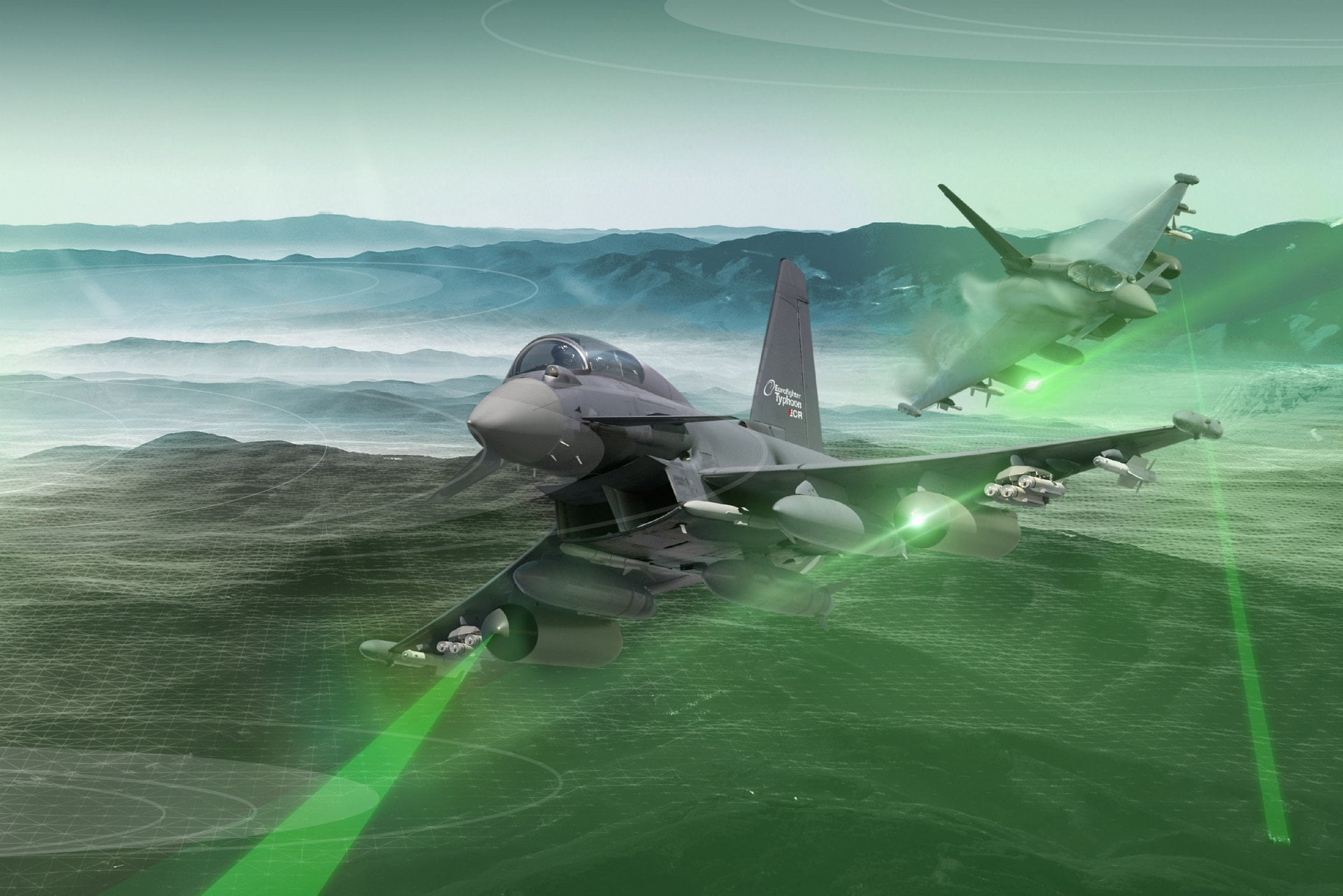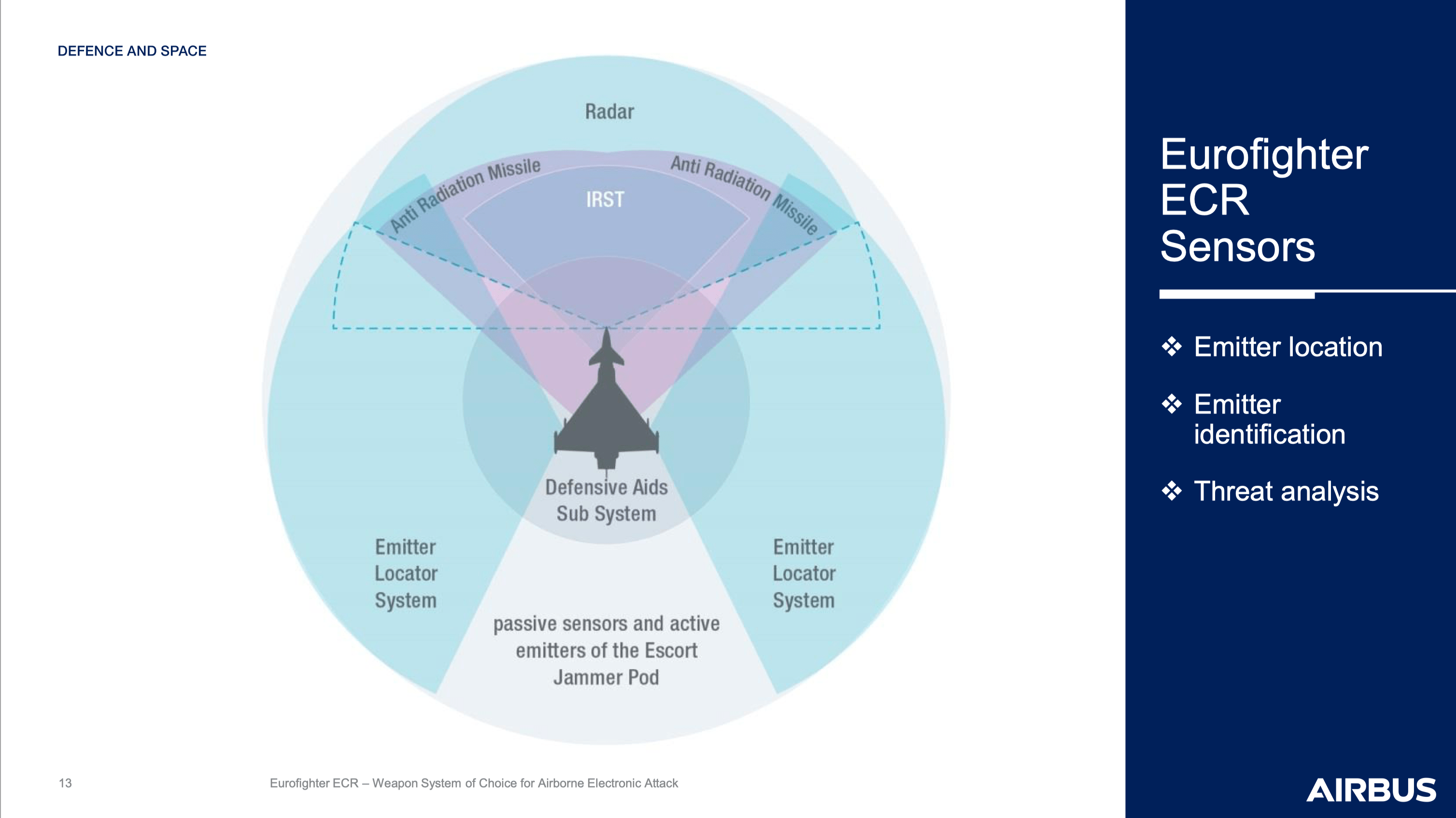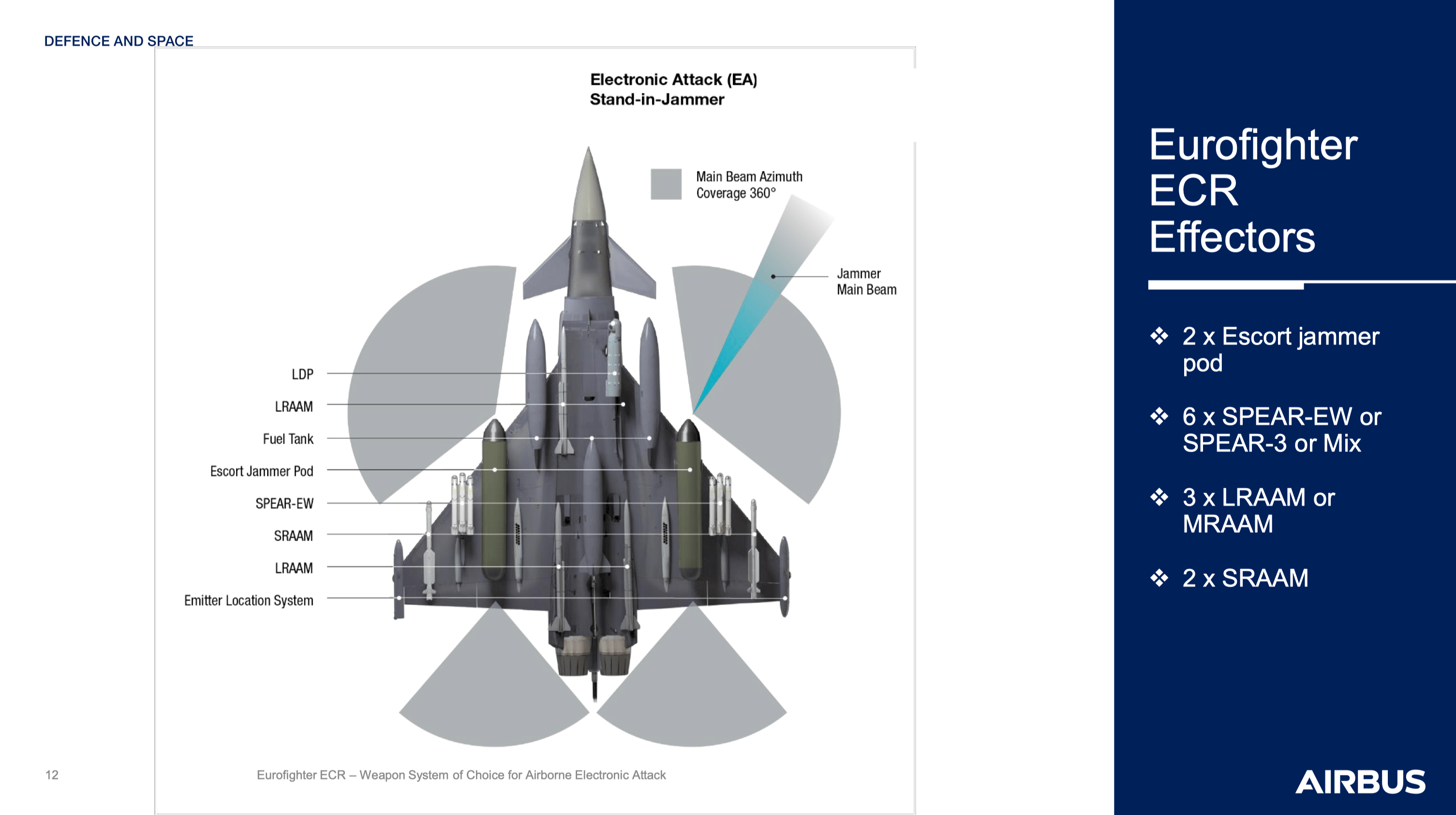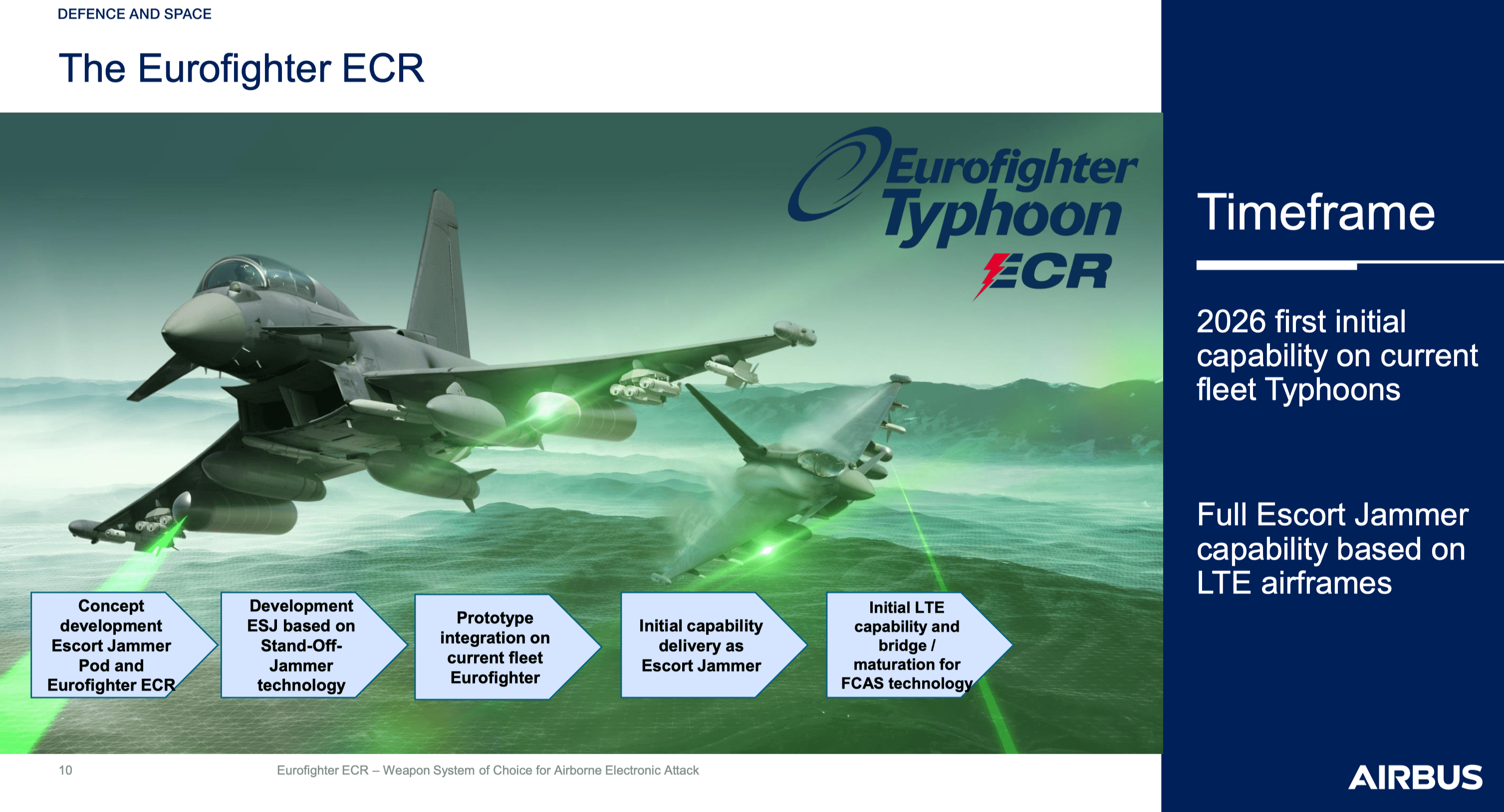By Robbin Laird
We had three different sets of presentations throughout the International Fighter Conference 2019 which discussed how the capabilities of the French, German and Eurofighter operating forces in. the years to come will evolve.
Namely, the new Future Combat Air System, Rafale and Eurofighter modernization.
But the core question is how convergent these paths are or are not?
With the Future Combat Air System approach and target goals, cross-cutting modernization is crucial to reach a convergent outcome for a new fighter in 2040.
With regard to Eurofighter modernization, the full consortium that has built, and generates modernization for the Eurofighter is not in FCAS, and indeed, the most modern of the Eurofighter operators, the RAF, has already generated significant modernization outside of the usual modernization channels, and is operating the F-35 and is focused on a unique path which is being framed as Team Tempest.
This means that convergence between FCAS and Eurofighter is already challenged by the question of how much overlap between the two approaches, FCAS development and multi-national Eurofighter modernization strategies will occur?
Then we come to the French and the Rafale.
There is no question that France is committed to the modernization of Rafale and seeks to export the airplane as it can, and will leverage new Air Forces operating Rafale to support an overall modernization process.
But because France operates Rafale on carriers, and has a unique European air delivered nuclear role, several aspects of Rafale modernization will be unique to the French Air Force.
And there is little doubt that the FAF is clearly tracking how to integrate with the F-35s CNI capability (and MADL), and is more than interested in going beyond the text messaging associated with Link 16.
The Future of Rafale
Major General Fred Parisot, head of FAF Plans and Programs, laid out a long-range plan for Rafale modernization with the goal of supporting a new FCAS fighter in 2040.
The Rafale is projected to be in operation for several decades ahead and will embody major upgrades in the F-4 software and hardware changes, which are designed to enhance the capability of the aircraft to be more software upgradeable, but also more lethal in terms of the weapons it can carry and leverage in the connected battlespace.
And there is a clear focus on the upgrade of the Rafale to be able to carry the next generation nuclear capable weapon as a core national requirement.
The following slide from Major General Parisot’s presentation highlight the way ahead which is envisaged by the FAF:
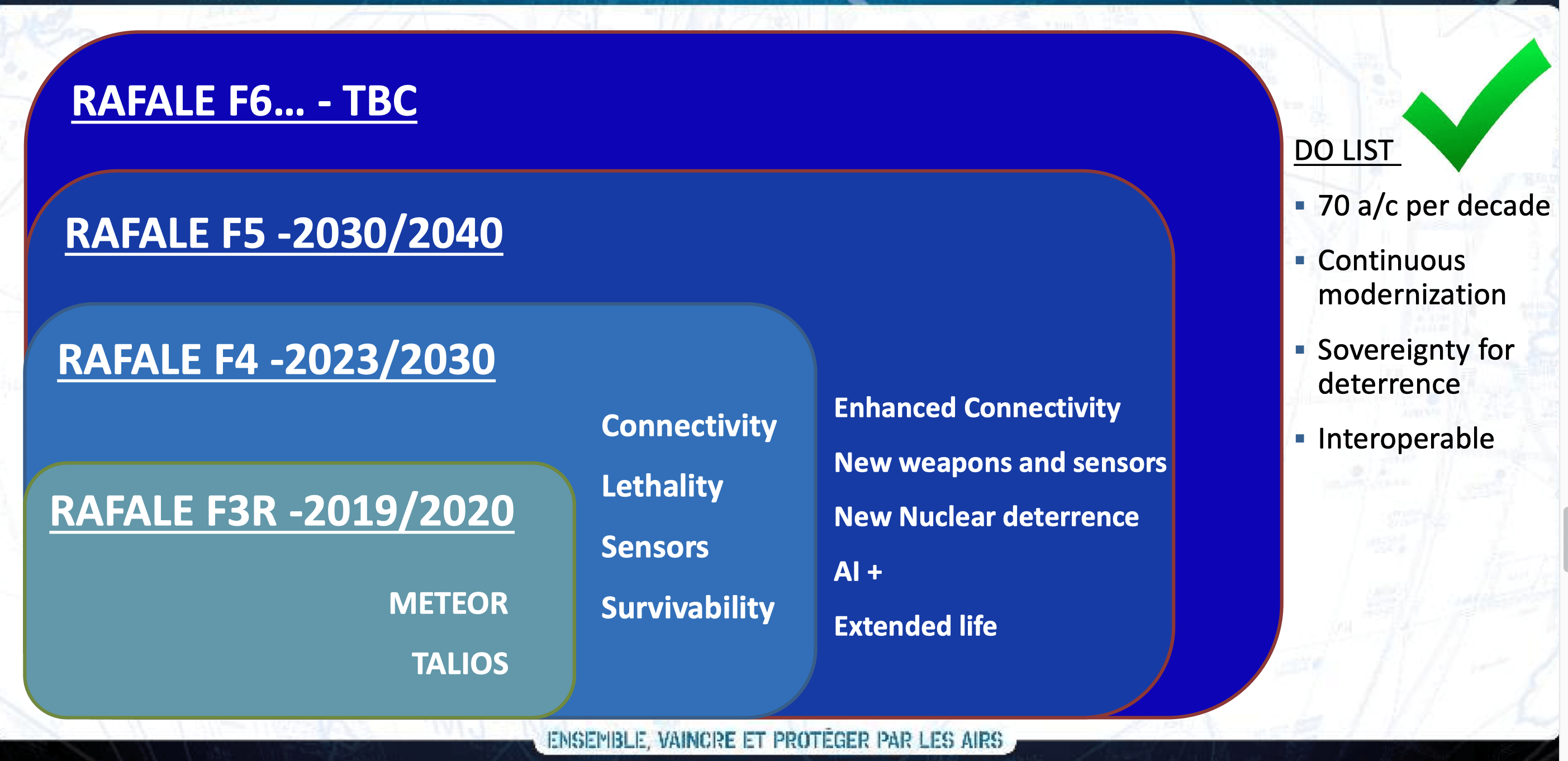
At the heart of these changes will be a focus on building a more connected force which will overtime go from additive connectivity to connectivity by design built into the new platforms for the air combat force.
The following slide from Major General Parisot’s presentation highlights the way ahead which is envisaged by the FAF with regard to connectivity:
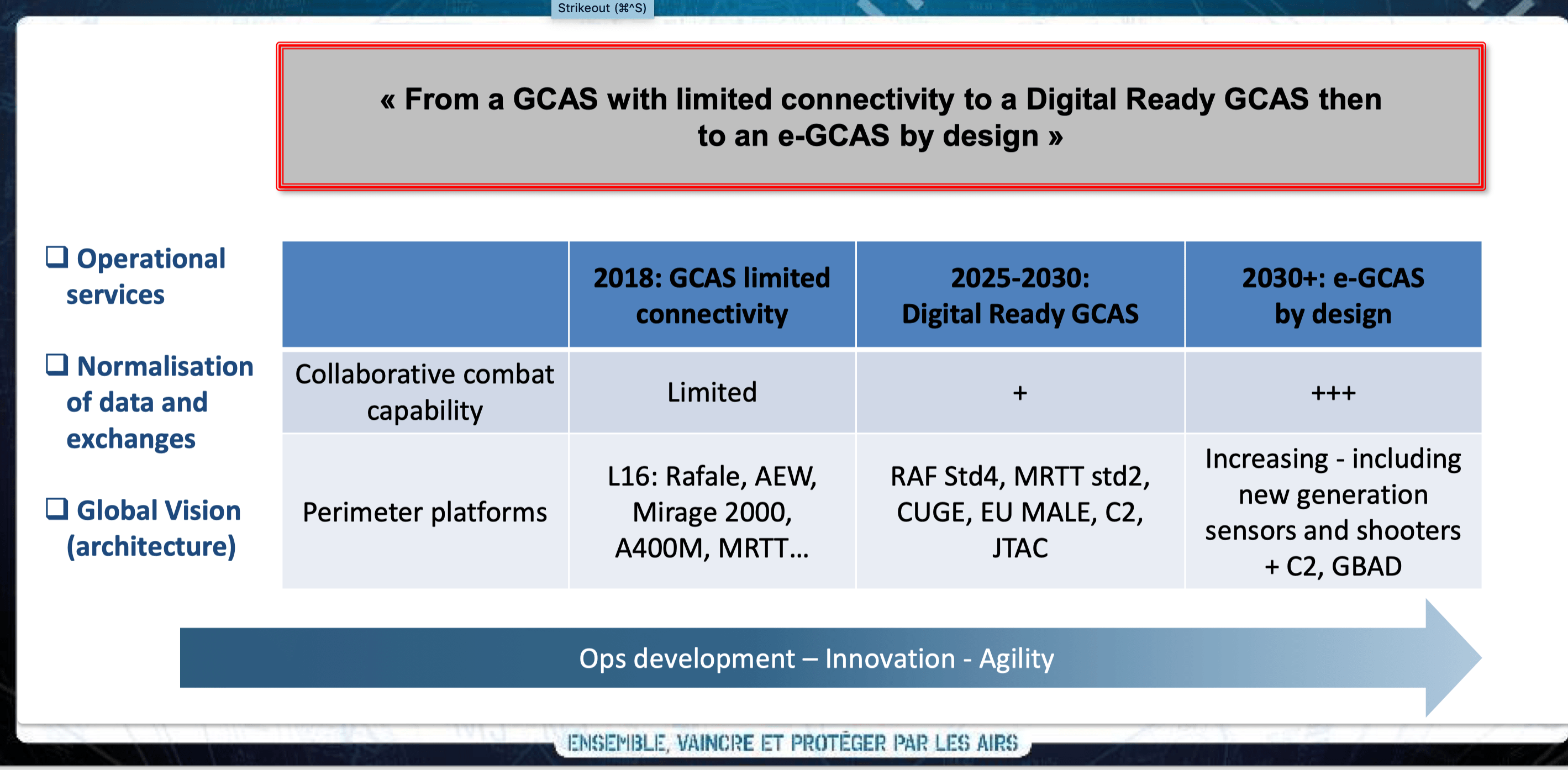
As Gareth Jennings noted about the discussions of Rafale at IFC 19:
France has laid out the upgrade path it intends to rollout for the Dassualt Rafale to keep the multirole combat aircraft in air force and naval service through to about 2070, a senior service official said on 13 November.
Speaking at the IQPC International Fighter conference in Berlin, Major General Frederic Parisot, Deputy Chief of Staff, Plans and Programmes, French Air Force (Armée de l’Air: AdlA), said that there will likely be a further four upgrade phases for the platform beyond the latest F3R configuration currently being rolled out, and that it is the country’s plan for the Rafale to serve as the force-multiplier alongside the New Generation Fighter (NFG) currently being developed with Germany and Spain as part of the wider Future Combat Air System (FCAS)/Système de Combat Aérien Futur (SCAF).
The Rafale’s current F3R configuration features major software and hardware upgrades that include the integration of the MBDA Meteor beyond-visual-range air-to-air missile (BVRAAM) and the latest laser-guided version of the Sagem Armement Air-Sol Modulaire (AASM) modular air-to-ground precision weapon; the Thales RBE2 active electronic scanned array (AESA) radar; the Thales TALIOS long-range airborne targeting pod; and automatic ground collision avoidance system (Auto-GCAS); an improved buddy-buddy refuelling pod; as well as the Spectra electronic warfare system.
The F4 standard plans to operate between 2023 and 2030, and it adds enhancements to the Thales RBE2 active electronic scanned array (AESA) radar, the TALIOS pod, and the Reco NG reconnaissance pod; upgrades to the aircraft’s communications suite; improved pilot helmet-mounted displays; a new engine control unit; and the ability to carry new weaponry such as the Mica Next-Generation (NG) air-to-air missile and 1,000 kg AASM. Further to the software and hardware improvements, the F4 upgrade will include a satellite antenna, as well as a new prognosis and diagnostic aid system designed to introduce predictive maintenance capabilities.
The Future of Eurofighter
Here the challenge is that there is no single Eurofighter but there are national Eurofighters which share commonality.
Indeed, the European Air Group has set up a working group to address ways to enhance the capability of Eurofighters to become more congruent among the national air forces.
This effort is a key one and a harbinger of success for either FCAS or Team Tempest.
With regard to mid-term modernization of Eurofighter, Airbus recently announced the launch of a new version of Eurofighter focused on delivering new electronic warfare capabilities to the force.
At the International Fighter Conference in Berlin Airbus and its partners introduced for the first time concrete details of the new Eurofighter electronic combat role (ECR) concept. This role will enlarge Eurofighter’s multi-role capabilities and further increase the survivability of coalition forces in hostile environments.
Collaborative electronic warfare capabilities are essential for future combined air operations.
Initial Eurofighter ECR capability is expected to be available by 2026, followed by further development steps and full integration into the future combat air system (FCAS) ecosystems.
Eurofighter ECR will be able to provide passive emitter location as well as active jamming of threats, and will offer a variety of modular configurations for electronic attack (EA) and suppression/destruction of enemy air defence (SEAD/DEAD). Latest national escort jammer technology will ensure national control over features such as mission data and data analysis. The concept also features a new twin-seat cockpit configuration with a multi-function panoramic touch display and a dedicated mission cockpit for the rear-seat.
The concept is driven by the leading aerospace companies Airbus, Hensoldt, MBDA, MTU, Premium Aerotec, Rolls-Royce and supported by the German national industry bodies BDSV and BDLI. It specifically targets the German Air Force requirements for an airborne electronic attack capability. Furthermore it is the single opportunity to deliver such capabilities on the basis of national sovereignty, whilst also securing key military technologies within Germany.
A presentation by Brigadier General Christian Leitges of the Luftwaffe made it clear why launching a new variant of the Eurofighter was needed certainly by the Luftwaffe.
He underscored that Germany had made a NATO commitment to expand its EW capabilities for the common defense.
Brigadier General Leitges argued: “We need to assure, that airborne assets can operate effect based in the whole spectrum of air operations against current and future hostile weapon systems.
“That means to prioritize the build up of capabilities that haven‘t been focused on in the past, e.g. Airborne Electronic attack.”
Brigadier General Leitges looked at the evolution of EW over time and underscored that the Luftwaffe had been organized I the past to penetrate ED “fences” but that the new challenge is to penetrate not simply fences but the A2/AD bubble.
The following slide from his presentation highlighted his perspective on the challenge:
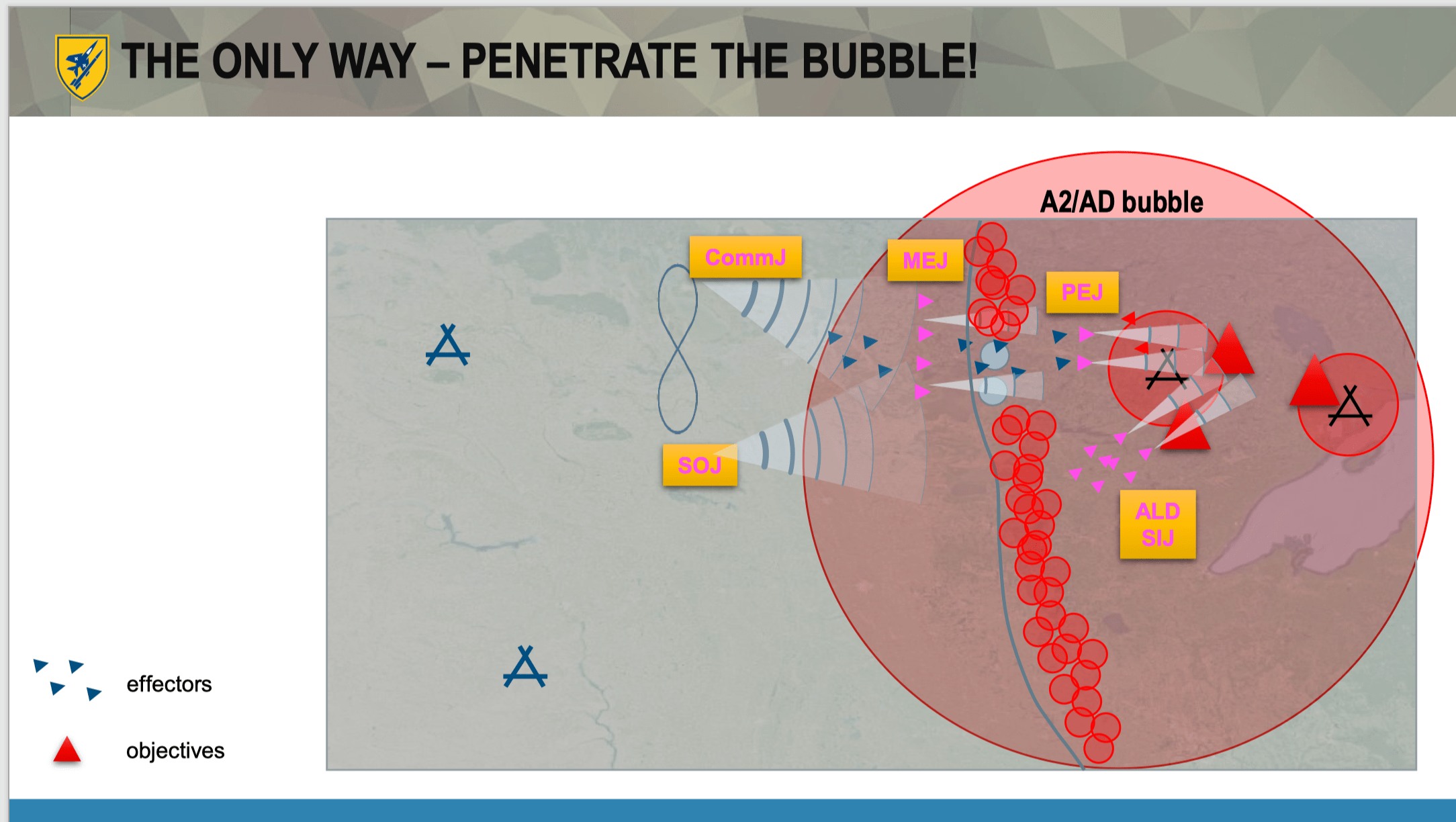
Brigadier General Leitges noted that the HARM missile was becoming AARGM which is an upgrade for the German Air Force in terms of anti-radiation missiles.
He also noted that adding a new AESA radar to the Typhoon was a key capability enhancement which was clearly a step ahead as well.
Electronic Warfare Capabilities as Near to Mid Term Focus: A SAAB Perspective
Jonas Grönberg from SAAB provided his perspective on “Outsmarting threats: enabling mission success in an A2/AD environment.”
He focused on the importance of having a wide range of EW capabilities which would allow one to influence the adversaries kill chain and defenses in a variety of ways and in a variety of time settings.
He conceptualized survival in the air from the perspective of electronic support and EW measures as follows:
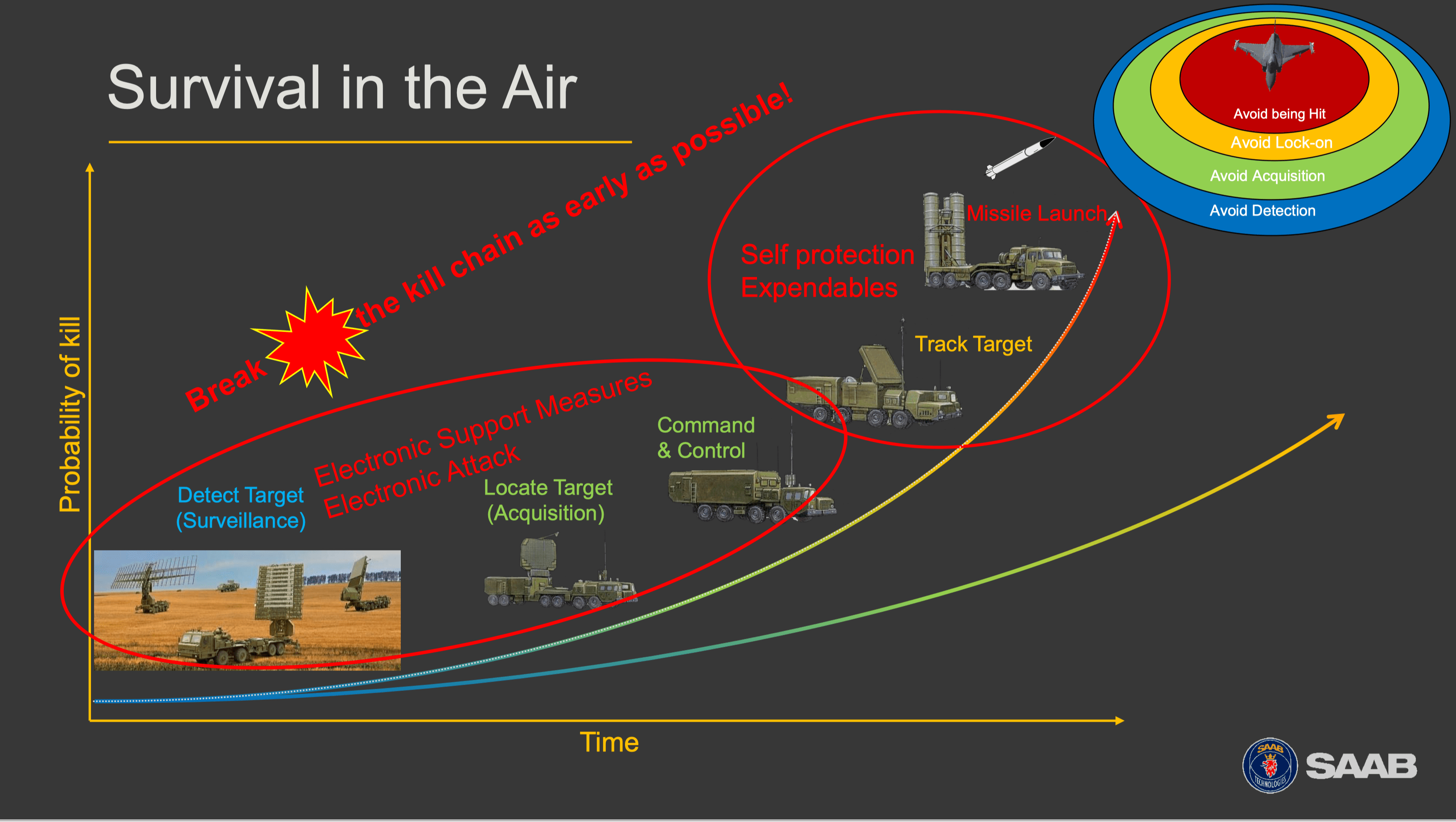
He then focused on a variety of ways to deliver the EW effect.
The first was standoff jamming.

The second is escort jamming.
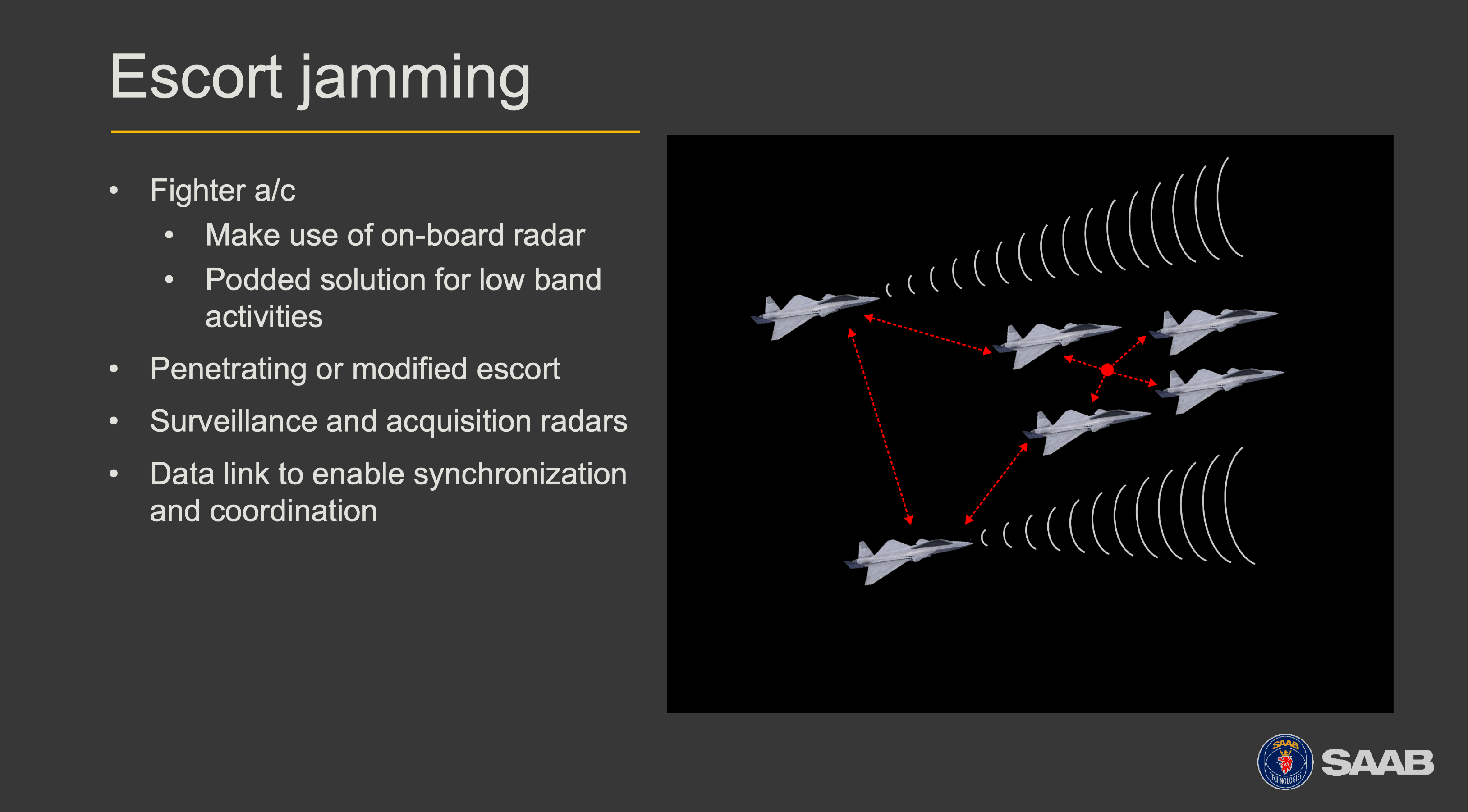
The third is to generate multiple false target radar jamming.
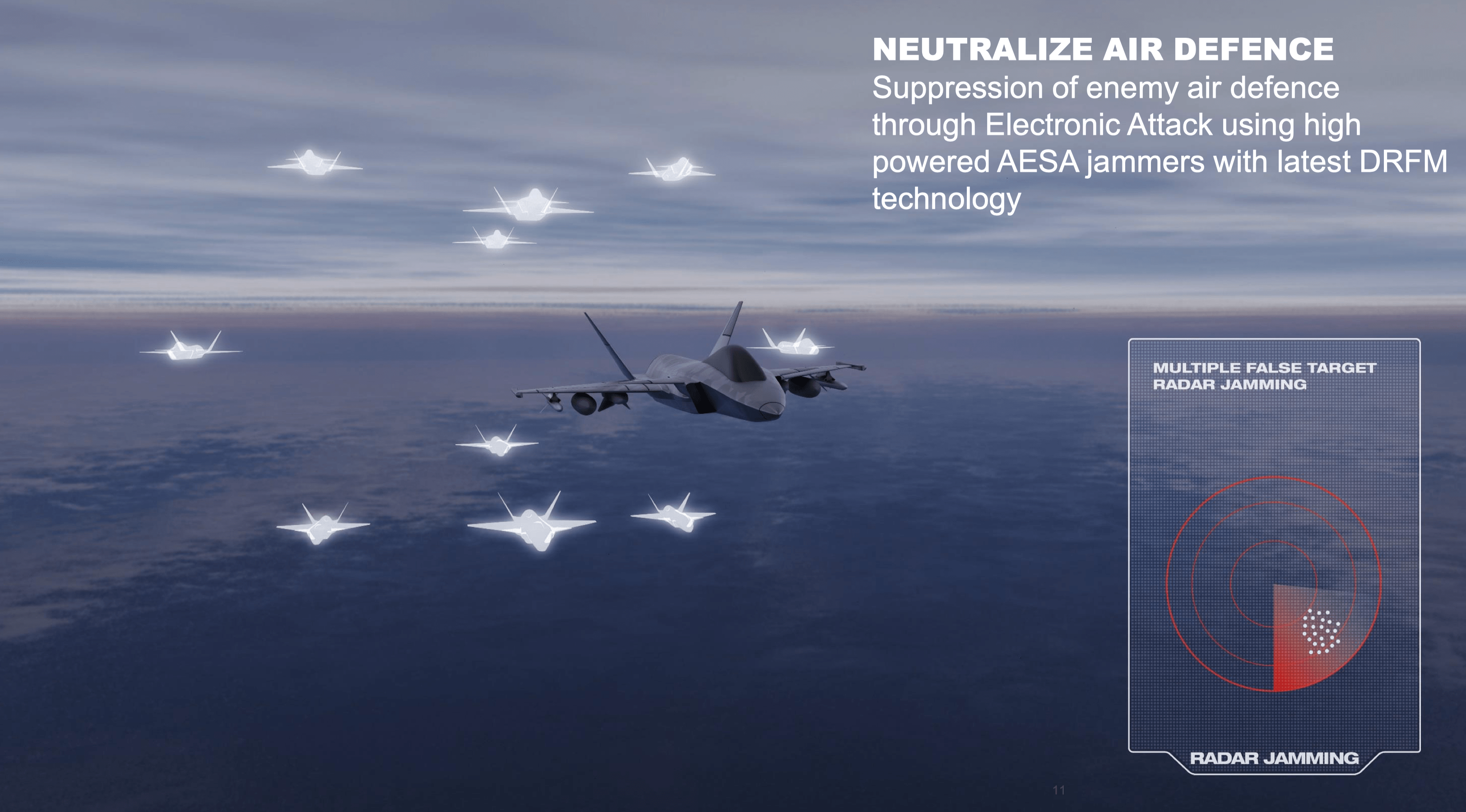
The fourth is to air launch a decoy.
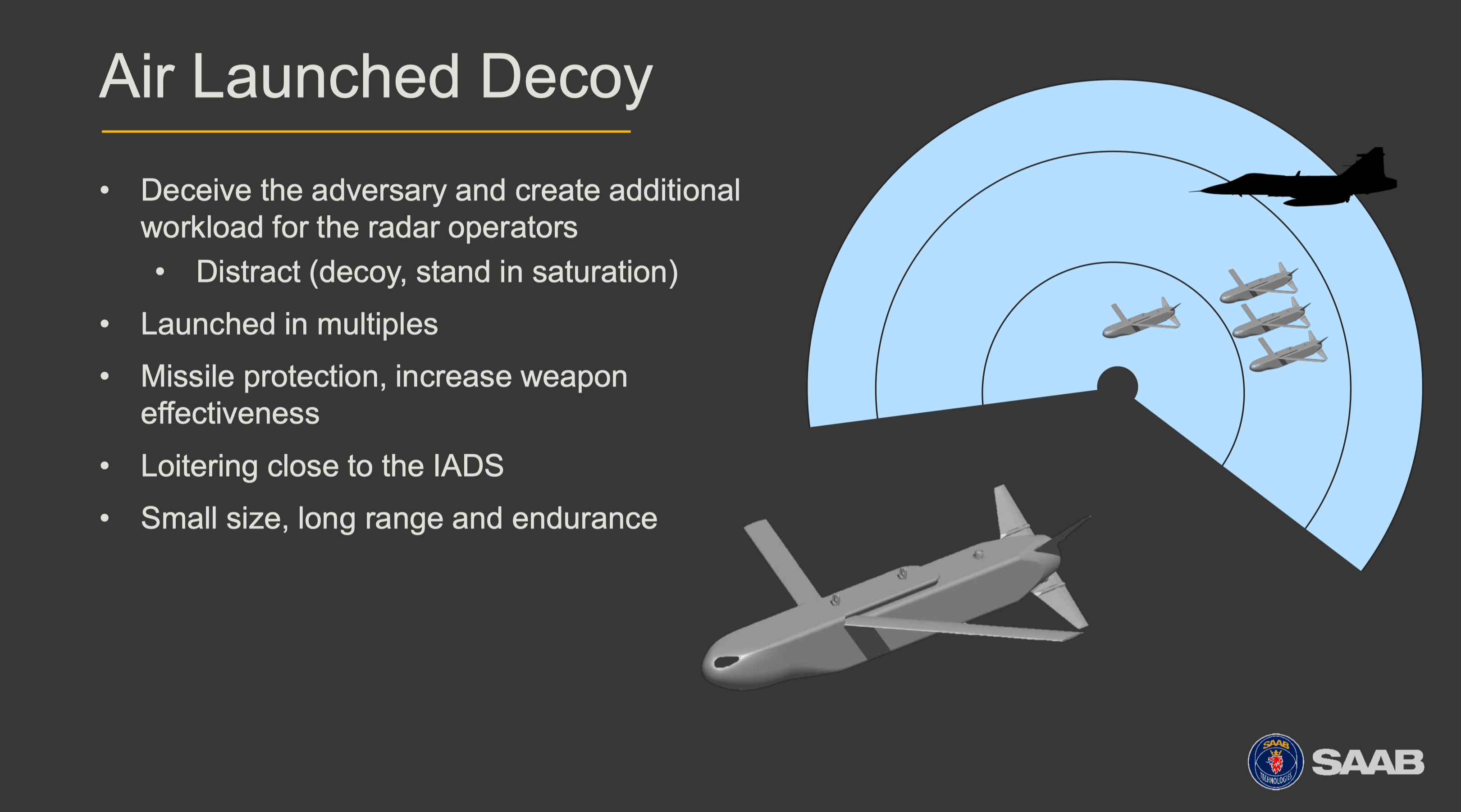
And, of course, these assets need to be blended into a combat package with effective C2.
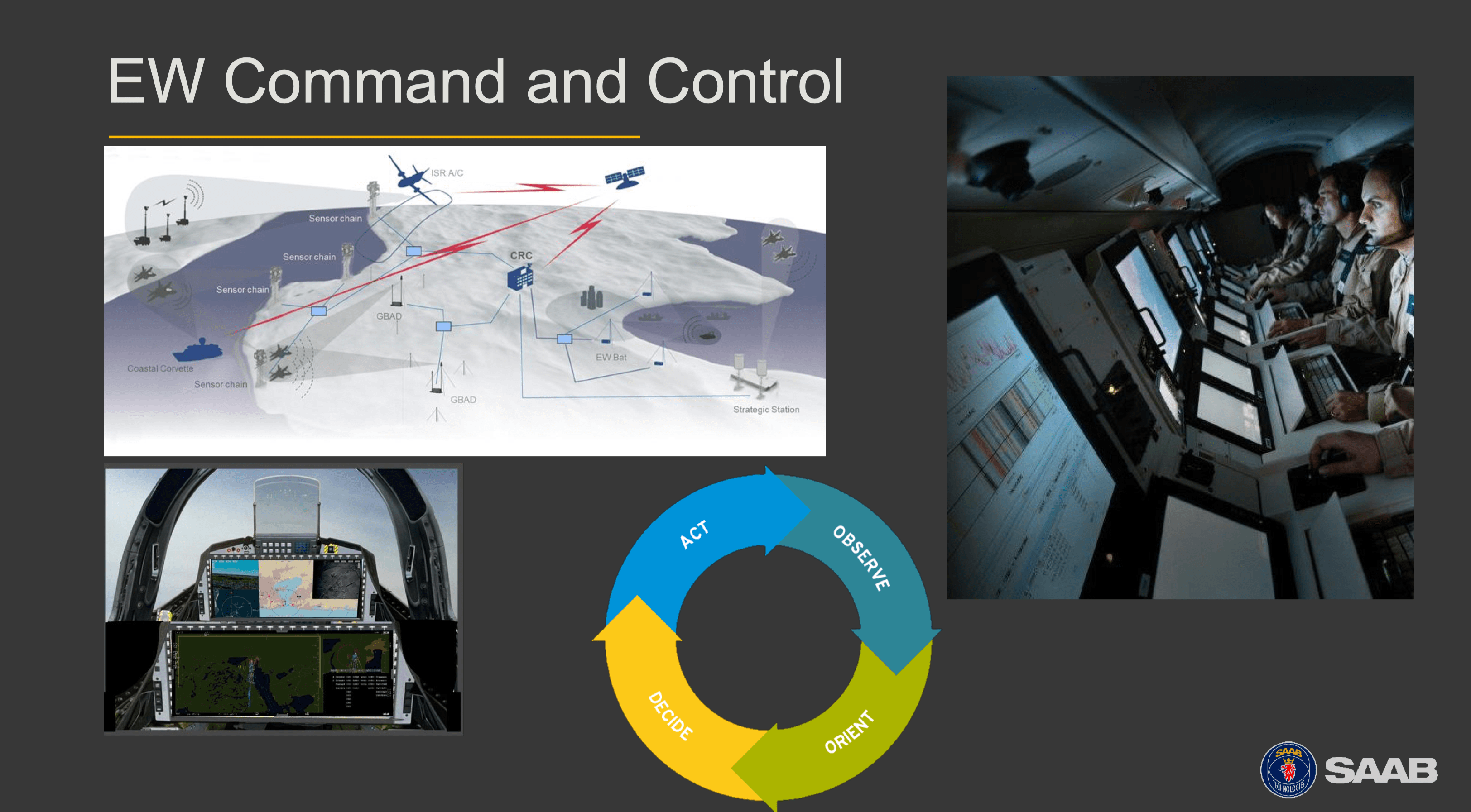
He underscored that SAAB was proceeding along these lines with its Gripen fighter aircraft, with a recent test of an electronic attack jammer pod on November 4, 2019.
Conclusion
There is a clearly a challenge to sort out ways to ensure as much convergence as possible to reach a common outcome.
But as a senior RAF officer put it:”We are working F-35/Typhoon integration while in direct contact with the adversary.”
And certainly, the FAF being one of the most active of Air Forces, will not have the luxury to think about the future of airpower while it is busily trying to keep its planes flying, and operating an diverse range of settings, and clearly modernizing based on that operational experience.
That gets at a significant challenge facing the major air forces.
There is no down time.
Modernization is being generated on the fly (sorry about the pun) and the challenge then is to ensure how modernization of any particular national force enhances or detracts from the ability to work together.
This is a general problem facing all of the active major air forces, but a general challenge to any multi-national efforts, such as FCAS, Eurofighter or the F-35 global enterprise.
How this challenge gets met or not, will determine the actually operational capability which can be delivered to the allied air forces working together.
The briefing given to IFC 19 by Raffael Klaschka, head of strategic marketing for Eurofighter, provided an overview of the new Eurofighter EW variant and slides from that presentation can be seen in the slideshow below.
My own report on Eurofighter modernization based on several visits to Eurofighter nations, can be read below:
Also, see the following:
The French Shape an Evolutionary Approach to Their Future Combat Air System


